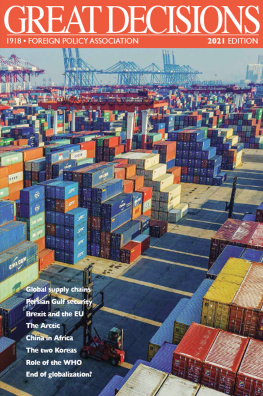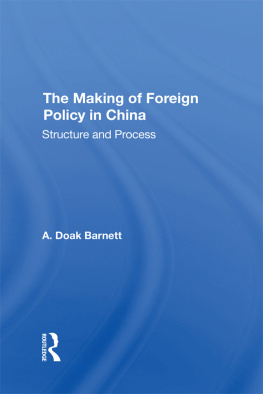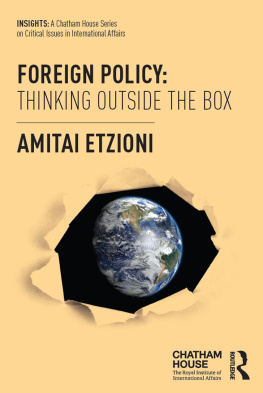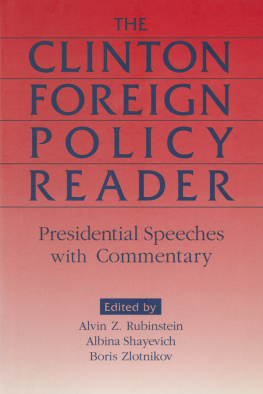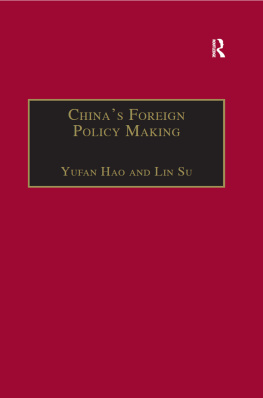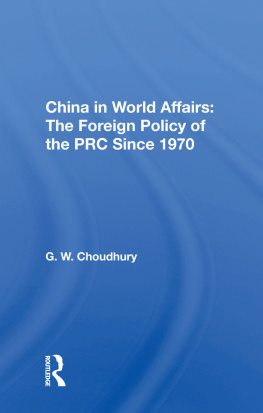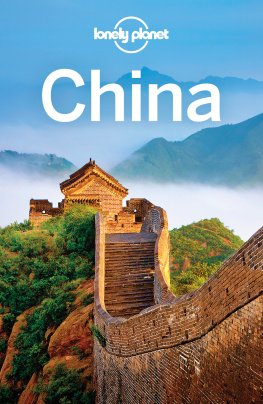First published 1979 by M.E. Sharpe
Reissued 2018 by Routledge
2 Park Square, Milton Park, Abingdon, Oxon OX14 4RN
711 Third Avenue, New York, NY 10017, USA
Routledge is an imprint of the Taylor & Francis Group, an informa business
Copyright 1979 by Taylor & Francis
No part of this book may be reprinted or reproduced or utilised in any form or by any electronic, mechanical, or other means, now known or hereafter invented, including photocopying and recording, or in any information storage or retrieval system, without permission in writing from the publishers.
Notices
No responsibility is assumed by the publisher for any injury and/or damage to persons or property as a matter of products liability, negligence or otherwise, or from any use of operation of any methods, products, instructions or ideas contained in the material herein.
Practitioners and researchers must always rely on their own experience and knowledge in evaluating and using any information, methods, compounds, or experiments described herein. In using such information or methods they should be mindful of their own safety and the safety of others, including parties for whom they have a professional responsibility.
Product or corporate names may be trademarks or registered trademarks, and are used only for identification and explanation without intent to infringe.
Publishers Note
The publisher has gone to great lengths to ensure the quality of this reprint but points out that some imperfections in the original copies may be apparent.
Disclaimer
The publisher has made every effort to trace copyright holders and welcomes correspondence from those they have been unable to contact.
A Library of Congress record exists under LC control number: 78051973
ISBN 13: 978-0-87332-118-1 (hbk)
ISBN 13: 978-1-315-17885-1 (ebk)
The "reopening" of China in 1971 by President Richard Nixon has already been regarded as a turning point of China's foreign policy and international politics. It has facilitated the reestablishment of Peking's diplomatic relations after the Cultural Revolution, broadened the dimension of China's international political, economic, and cultural activities, and promoted China's campaign against hegemonism of the superpowers. Its impact on China's relationships with the outside world, particularly the United States and Third World countries, is immeasurable.
In less than a decade after the "reopening" of China, the main figures who were responsible for the "breakthrough" were out of the political arena Richard Nixon resigned in 1974 in the Watergate scandals, Mao Tse-tung and Chou En-lai both passed away in 1976. But, "the world rolls on," in Mao's words, "time presses." Sino-American relations continue to develop. Moreover, China, under a new leadership, is struggling to usher in an era of modernization, ambitiously proposing to build herself into a true world power.
In view of the important events in the past and perceiving possible significant developments in the future, Michael Yingmao Kau and I had planned to co-edit this volume for some time. After the primary work on my part was finally completed, Ying-mao found himself too tied up with his gigantic "Mao's writings project" to spare any time for this volume. He withdrew graciously. I felt a loss, I am indebted to him for his early cooperative effort.
I am grateful to Rutgers University for a research grant which facilitated my research. I am also thankful for the assistance rendered by the Library of Congress, and the libraries of Columbia, Princeton, and Rutgers universities. Several colleagues and students have helped me by offering criticisms and opinions. I thank them.
I would also like to express my appreciation to Douglas Merwin, Chinese Publications Editor, and other staff of M. E. Sharpe, Inc., who have made my preparation of this volume pleasant and smooth.
Finally, I want to thank my wife, Grace, for her constant encouragement and assistance, and my two young sons, David and Donald, for their periodic help in filing clippings and data.
China
and
the
Three
Worlds
The "three-world" theory is China's (Mao Tse-tung's) new concept of world politics after the Sino-American rapprochement. This concept, originally developed from the Soviet "two-camp" theory of 1947, has an immediate connection with Peking's "intermediate zone" theory of 1964. On January 21, 1964, Jen-min jih-pao [People's Daily] carried an editorial asserting the existence, between the Western imperialist world and the Communist bloc, of two "intermediate zones" the first in the "Third World" area, and the second in Western Europe, Oceania, Canada, and other capitalist countries.
In February 1974, when Mao talked with a visiting African leader in Peking, he stated his "three-world" viewpoint:
In my view, the United States and the Soviet Union form the first world. Japan, Europe and Canada, the middle section, belong to the second world. We are in the third world.... With the exception of Japan, Asia belongs to the third world. The whole of Africa belongs to the third world, and Latin America too.1
What made Mao shift his world outlook over a period of ten years? A principal reason was the change in the world situation, but a more significant factor was Mao's perception of the world in line with his antihegemonic policy.
As far as the timing is concerned, the Sino-American rapprochement is the watershed that divided China's present foreign relations from the past. From the Chinese standpoint, the rapprochement was a great strategic game played by Chairman Mao Tse-tung and Premier Chou En-lai. It turned the United States from being the "No. 1 enemy" to being a potential friend, played the United States off against the Soviet Union, removed the likelihood of the creation of a "two-China" situation, and switched Japan's formal diplomatic ties from Taipei to Peking. In making full use of the contradictions among the major international actors, it was a masterpiece of the Mao-Chou foreign policy. In this context, a study of China's relations with the three worlds since the rapprochement is a significant challenge.





